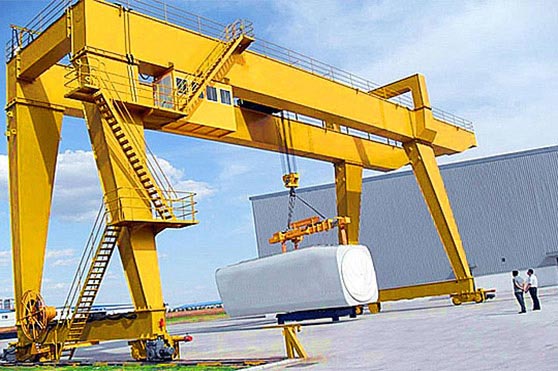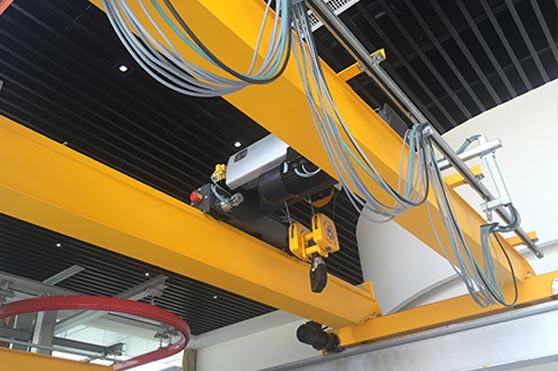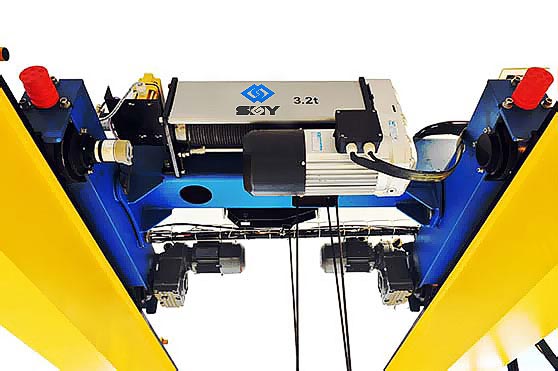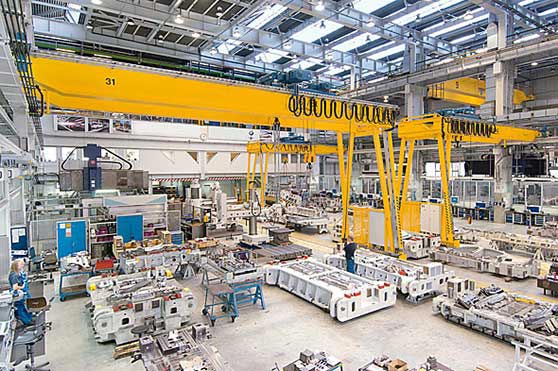Crane is a kind of hoisting machinery, is a kind of machinery for circulating, intermittent movement. A working cycle includes: the picking device lifts the item from the picking place, then moves horizontally to the designated place to lower the item, and then performs a reverse movement to return the picking device to the original position for the next cycle.
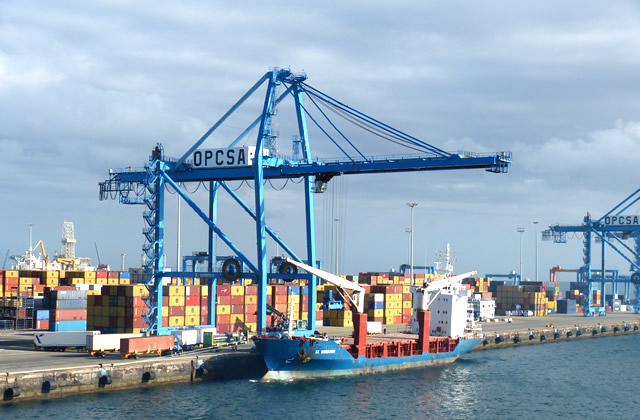
Generally, the hoisting machinery consists of a lifting mechanism (to move the item up and down), a running mechanism (to move the lifting device), a luffing mechanism and a slewing mechanism (to move the item horizontally), plus a metal mechanism, power device, and operation control And necessary auxiliary equipment.
Classification of mobile cranes:
1. Truck crane
The crane is installed on the chassis of a general-purpose or special-purpose car. The low-disk performance is equal to that of a truck with the same total vehicle weight. This type of crane is generally equipped with two operating rooms for getting on and off the vehicle, and the outriggers must be extended to maintain stability during operation. The lifting capacity ranges from 8 tons to 1000 tons, and the number of axles of the chassis can be from 2 to 10. It is the largest and most widely used crane type.
2. Tire crane
The crane is mounted on a special pneumatic tire chassis. The same engine is used to get on and off the vehicle, and the driving speed generally does not exceed 30KM/H, and the width of the vehicle is also wide, so it is not suitable to drive long distances on the highway. It has the function of lifting and traveling without supporting legs, and is suitable for lifting operations in places with limited moving distances such as freight yards, docks, and construction sites.
3. Off-road tire crane
It is a crane developed in the 1970s. Its lifting function is similar to that of a tire crane. It can also be used for lifting without legs and lifting weights. The difference is the structural form of the chassis and the improved driving performance brought about by the unique chassis structure. The engines of this crane are all mounted on the chassis, which has two axles and four large-diameter off-road tires. All four wheels are driving wheels and steering wheels. When transferring positions on the muddy construction site, all four wheels transmit power, that is, four-wheel drive, to improve the ability to pass through the muddy ground and uneven road surface. When driving on a flat road at a faster speed, only two wheels of the front axle or the rear axle are used to drive to reduce energy consumption. In the random file of the crane, 4×4 is used to indicate four-wheel drive, and 4×2 indicates that two of the four axles are driving wheels. This model is suitable for small field operations. Continuous stepless speed change can be realized, and the engine will not stop when the road resistance changes suddenly, thus greatly facilitating the driver's operation. The off-road tire crane is a powerful and flexible tire crane with extended performance.
4. All-terrain crane
It is a high-performance product with the characteristics of truck crane and off-road crane. It can not only transfer fast and travel long distances like a truck crane, but also meet the requirements of working on small and rugged or muddy fields, that is, fast driving speed, multi-axle drive, all-wheel steering, three steering methods, off-ground The gap is large, the climbing ability is high, and the function of supporting the weight of the outrigger is not necessary. It is a very promising product. However, the price is higher, and the requirements for use and maintenance are higher.
5. Special crane
A special crane developed to complete a specific task. For example: the ambulances mounted on off-road vehicles or armored vehicles for the implementation of tactical technical support for mechanized forces; highway wreckers for handling traffic accidents, etc., all belong to this category.
Crane safety settings
In order to ensure the safety of the lifting operation, the crane is equipped with a relatively complete safety device, so as to protect the machine parts or remind the operators to pay attention to in the event of an accident, so as to play a role in safety protection.
1. Each relief valve in the hydraulic system: It can suppress the abnormal high pressure in the circuit to prevent the damage of the hydraulic oil pump and motor, and prevent it from being in an overload state.
2. Boom luffing safety device: When an unexpected accident occurs and the high-pressure hose or tubing in the boom luffing cylinder circuit bursts or is cut off, the balancing valve in the hydraulic circuit functions to lock the work from the lower chamber of the cylinder The oil prevents the boom from falling, thereby ensuring the safety of the operation.
3. Boom telescopic safety device: When an unexpected accident occurs and the high-pressure hose or tubing in the boom telescopic cylinder circuit bursts or is cut off, the balancing valve in the hydraulic circuit functions to lock the working oil from the lower chamber of the cylinder, The crane will retract itself to ensure the safety of the operation.
4. Height limit device: After the hook is lifted to the specified height, touch the limit weight and turn on the travel switch, the "overwind" indicator light is on, and the hook is cut off, the boom is extended, and the crane is lifted. The arm is bent to wait for the action to ensure safety. At this time, as long as the hook is lowered, the boom is retracted or the boom is lifted (that is, operated toward the safety side), the limit weight is released, and the operation returns to normal. In special occasions, if you still need to perform a small amount of bypass operation, you can press the release button on the instrument box, and the function of the limit is released at this time, but the operation at this time must be very careful to prevent accidents.
5. Outrigger locking device: When an unexpected accident occurs and the high-pressure hose or tubing leading to the vertical oil cylinder of the outrigger breaks or cuts, the bidirectional hydraulic lock in the hydraulic system can block the outrigger to seal the pressure oil in the two chambers of the cylinder, so that the support The legs are not retracted or thrown out to ensure the safety of lifting operations.
6. Lifting weight indicator: The lifting weight indicator is set on the side of the basic arm (ie the right side of the control room), the operator can clearly observe it when sitting in the control room, and can accurately indicate the boom Elevation angle and rated allowable lifting capacity of crane under corresponding working conditions.
7. Lifting characteristic table: set on the lower wall panel on the front side of the operating room, this table lists the rated lifting weights and lifting heights under various arm lengths and various working ranges for easy reference during operation. When lifting, never exceed the value specified in the table. In order to ensure the safety of the lifting operation, the crane is equipped with a relatively complete safety device, so as to protect the machine parts or remind the operators to pay attention to in the event of an accident, so as to play a role in safety protection.


